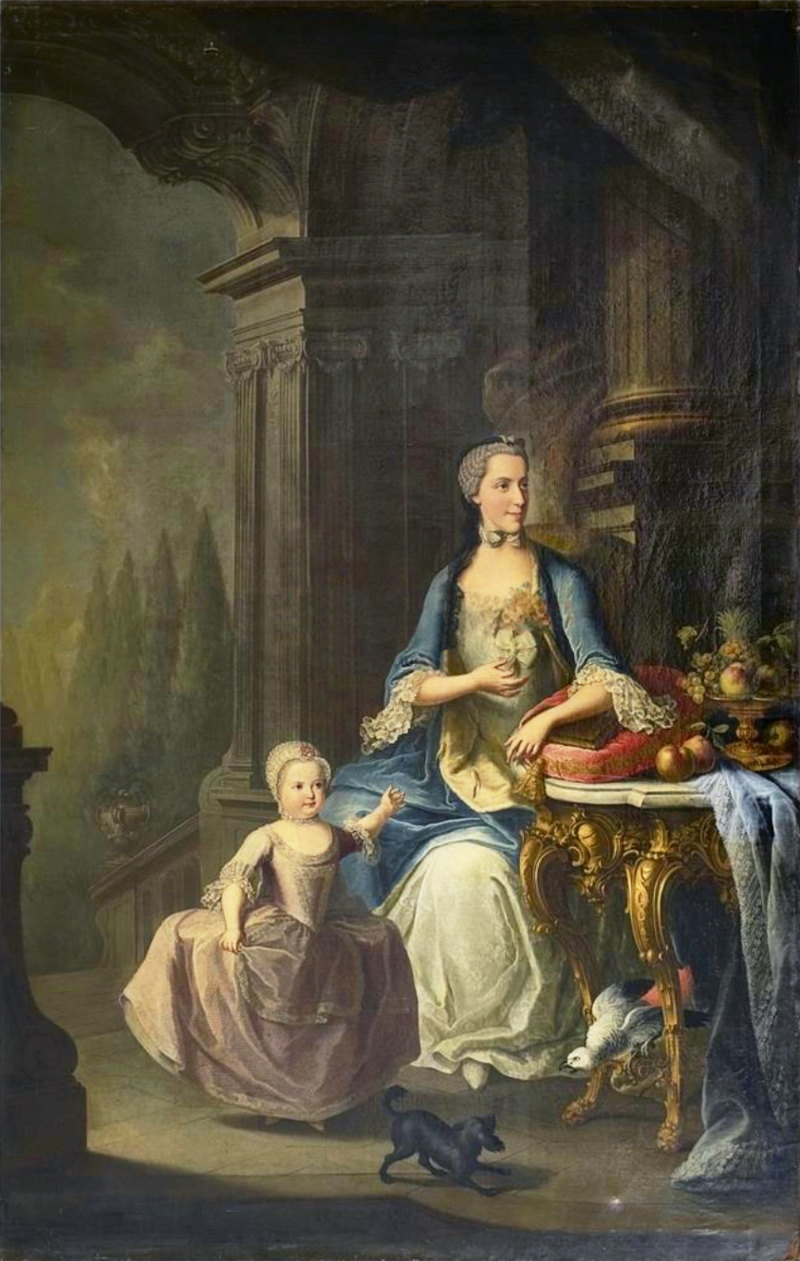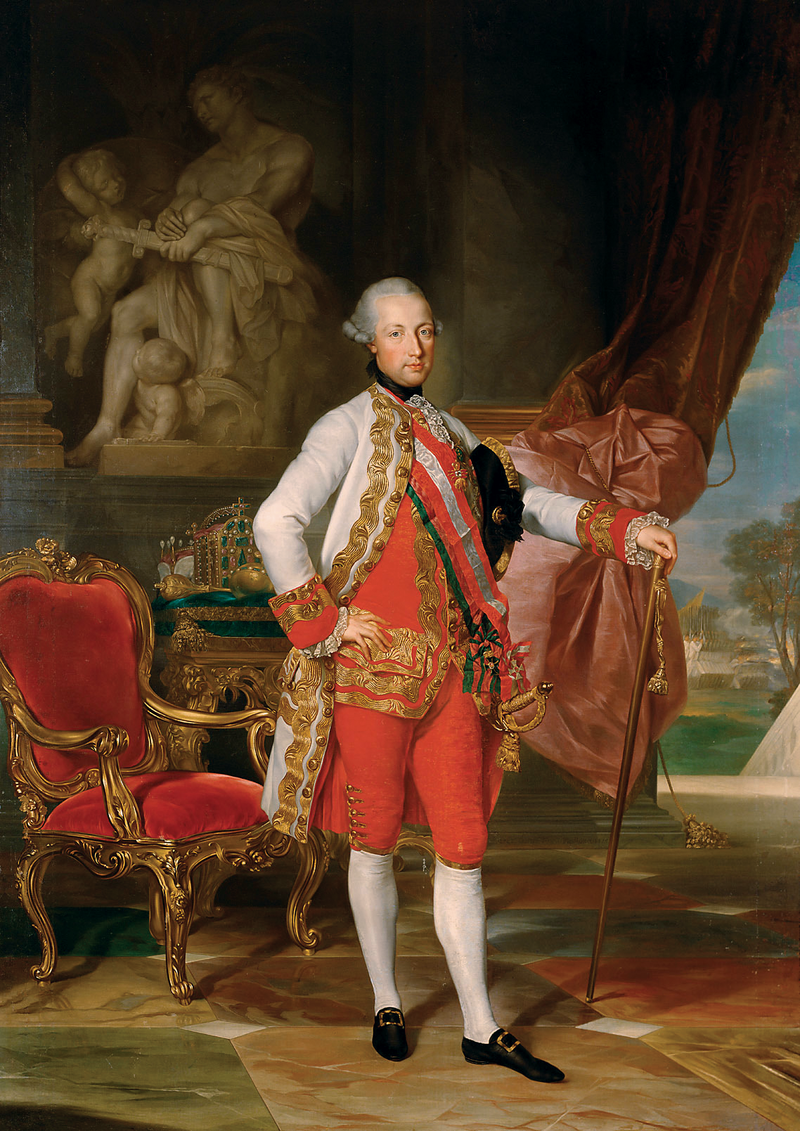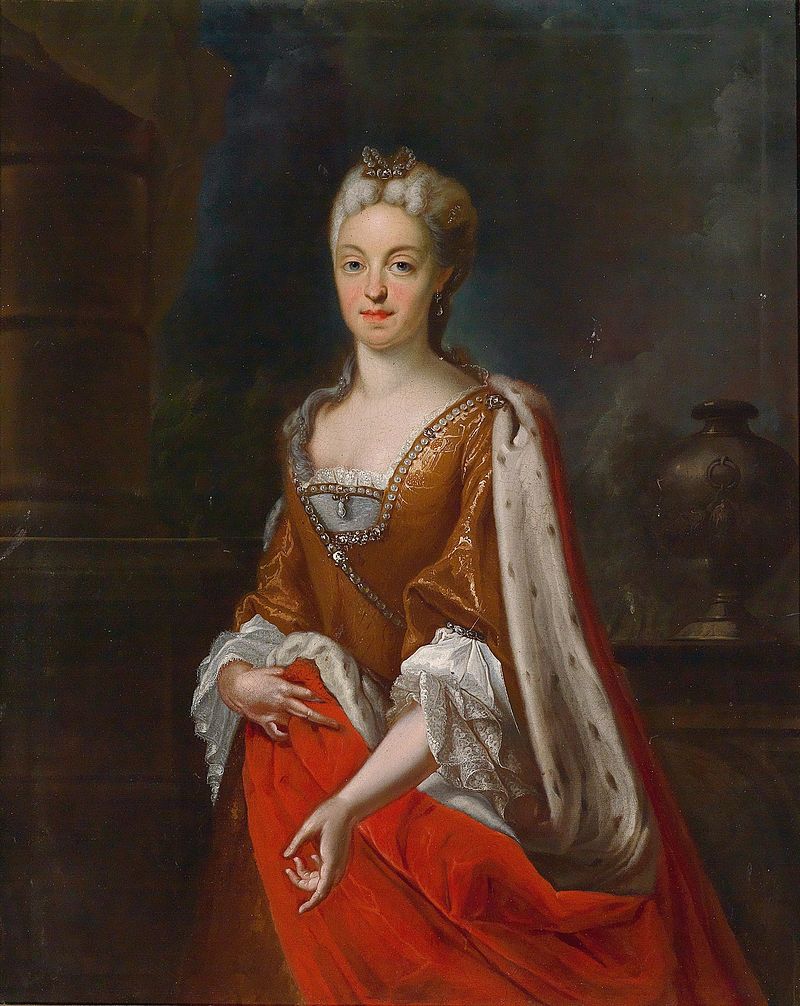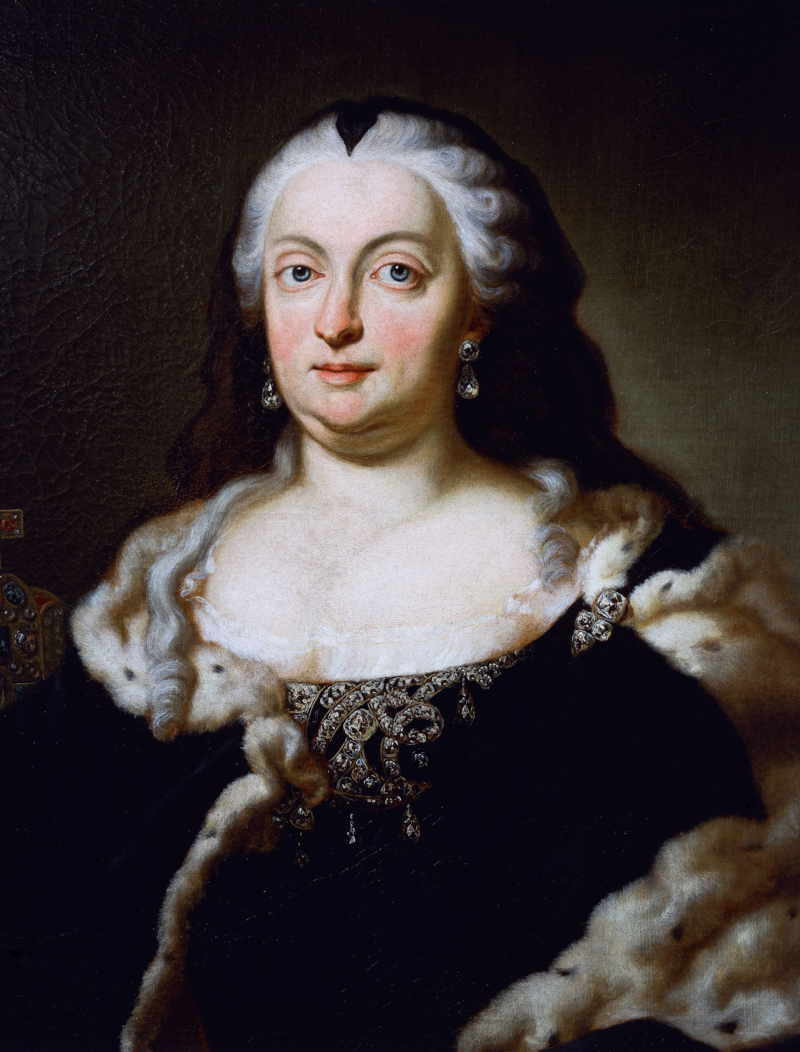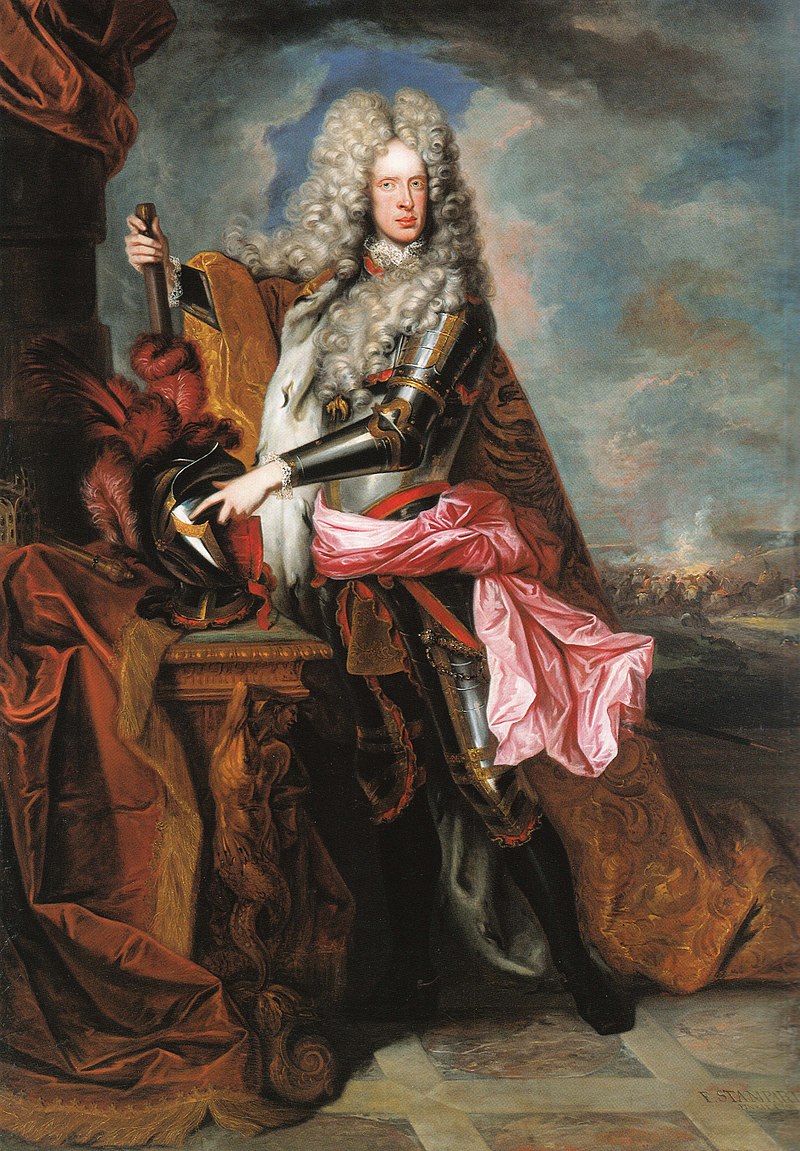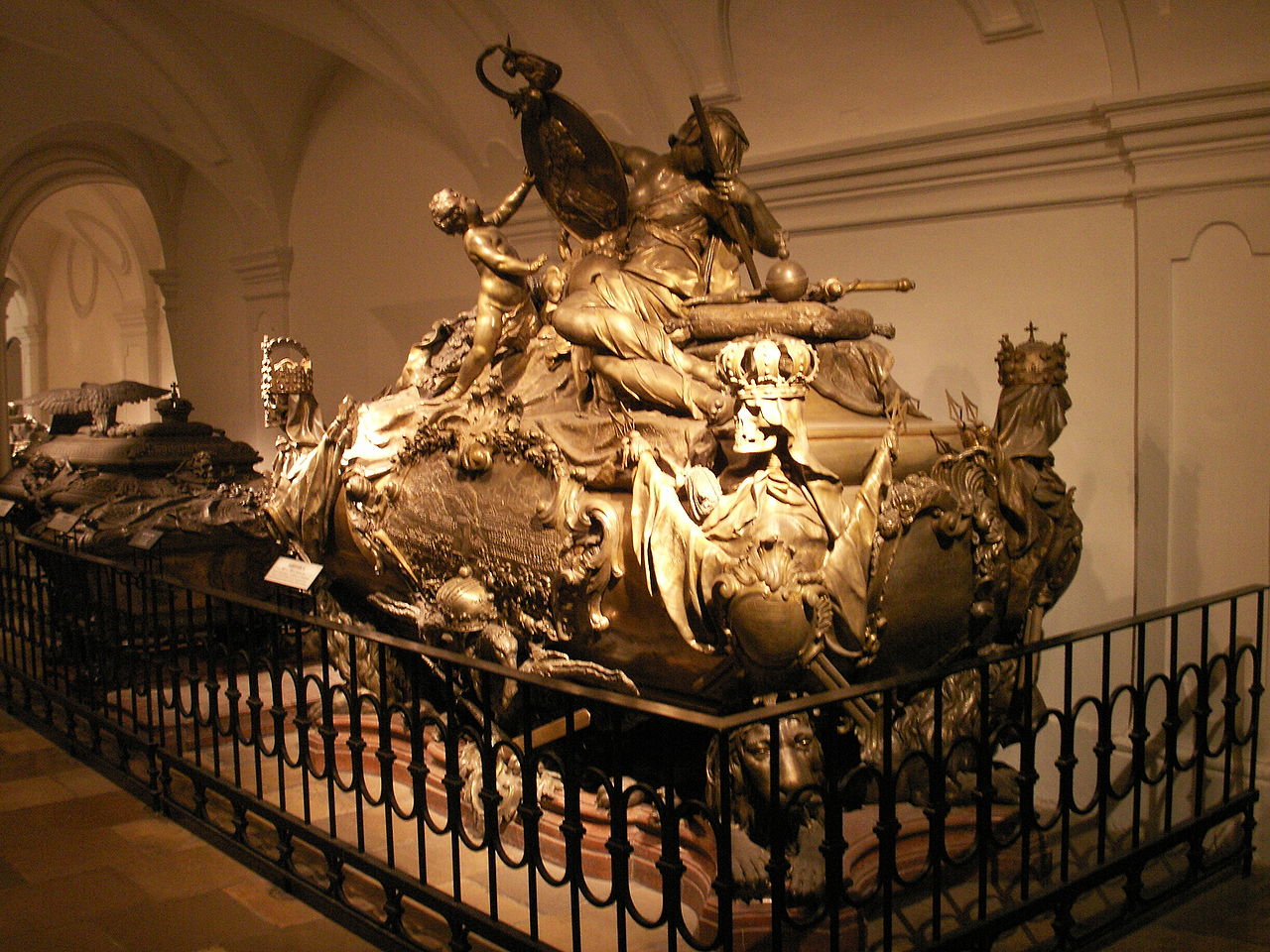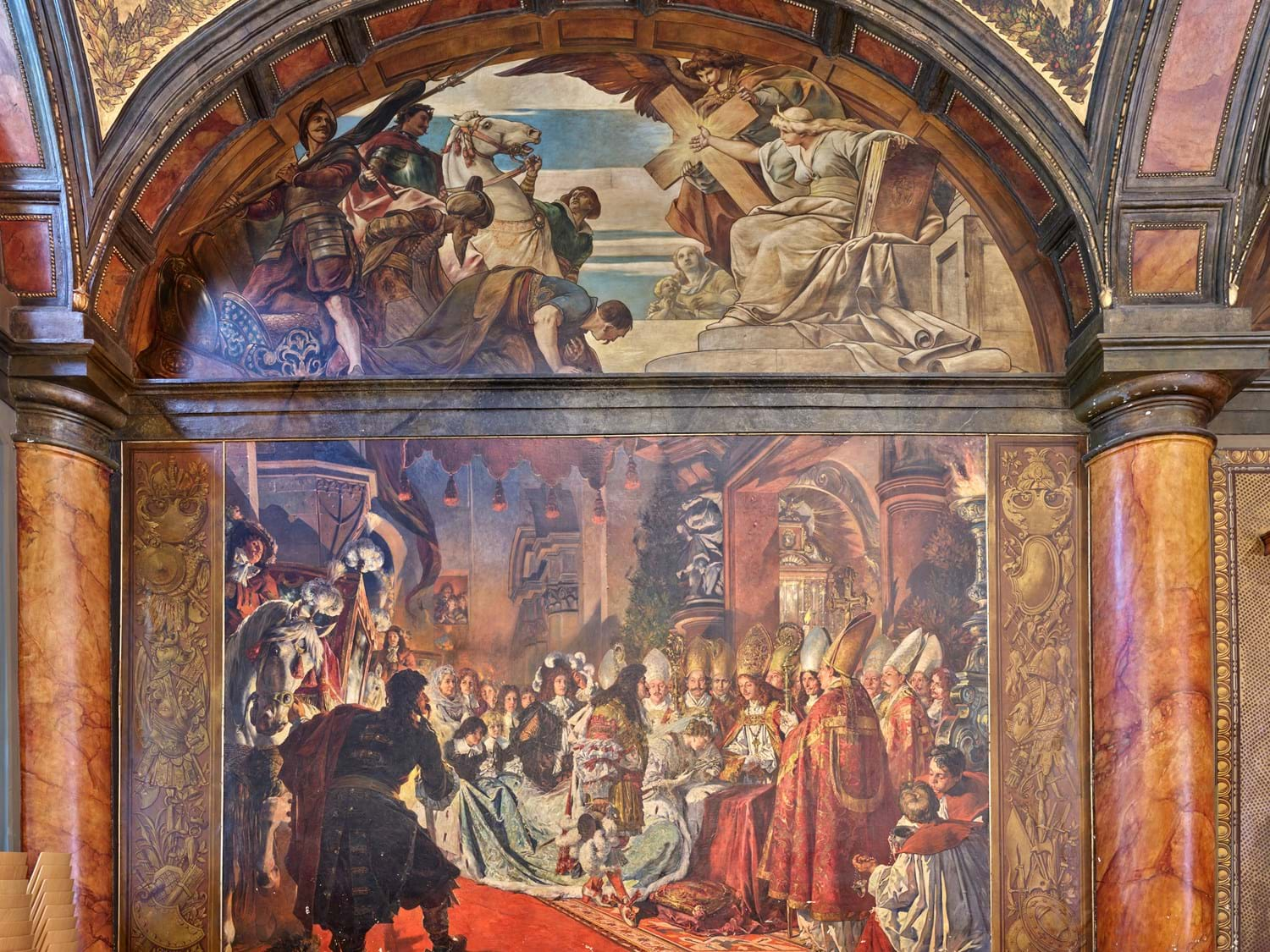by Susan Flantzer
© Unofficial Royalty 2025
Regina with family photos at her home Villa Austria in Pöcking on Lake Starnberg in Bavaria, Germany
Regina von Habsburg was the wife of Otto von Habsburg, the last Crown Prince of Austria, Hungary, Bohemia, and Croatia. By birth, she was a member of the House of Saxe-Meiningen. Although sometimes called Princess Regina of Saxe-Meiningen, the Duchy of Saxe-Meiningen, today part of the German state of Thuringia, ceased to exist in 1918, at the end of World War I, seven years before Regina’s birth.
Regina Helene Elisabeth Margarete was born on January 6, 1925, in Würzburg, then in the Weimar Republic, now in Germany. She was the youngest of the four children and the younger of the two daughters of Prince Georg of Saxe-Meiningen and Countess Klara Marie von Korff genannt Schmising-Kerssenbrock (1895 – 1992). Regina’s father was Head of the House of Saxe-Meiningen from 1941 until he died in 1946. Her mother was a second cousin of Queen Beatrix of the Netherlands and a great-great-granddaughter of Princess Feodora of Leiningen, half-sister of Queen Victoria. Regina’s paternal grandparents were Prince Friedrich Johann of Saxe-Meiningen and Countess Adelaide of Lippe-Biesterfeld. Her maternal grandparents were Count Alfred von Korff genannt Schmising-Kerssenbrock and Baroness Helene von Hilgers.
Regina had three elder siblings:
- Prince Anton Ulrich of Saxe-Meiningen (1919 – 1940), unmarried, killed in action during World War II
- Prince Friedrich Alfred of Saxe-Meiningen (1921 – 1997), unmarried, converted to Roman Catholicism, became a Carthusian monk, renounced the succession to the Head of the House of Saxe-Meiningen allowing it to pass to his uncle Prince Bernhard of Saxe-Meiningen, Head of the House of Saxe-Meiningen from 1946 – 1984
- Princess Marie Elisabeth of Saxe-Meiningen (1922 – 1923), died in infancy

Veste Heldburg where Regina grew up; Credit – Own work, CC BY-SA 3.0 de, https://commons.wikimedia.org/w/index.php?curid=22438074
The House of Saxe-Meiningen was Evangelical Lutheran, and Regina’s two brothers were raised in that faith. However, Regina was raised as a Roman Catholic, her mother’s faith. She grew up in the family’s ancestral castle Veste Heldburg (Heldburg Fortress), a medieval hilltop castle in Hildburghausen, the capital of the Duchy of Saxe-Meiningen, now in Thuringia, now a German state. After the Duchy of Saxe-Meinigen ceased to exist, in 1918, the Saxe-Meinigen family retained possession of the Veste Heldburg. In 1945, at the end of World War II, Veste Heldburg was confiscated by the Soviet occupying force and the Saxe-Meiningen family received no compensation. Hildburghausen, where Veste Heldburg was located, was part of Communist East Germany, a Soviet satellite country, from 1949 until the reunification of Germany in 1990. In 2007, Regina received forty-seven paintings from the Friedenstein Castle Foundation. The paintings had been part of her father’s collection and were part of the property confiscated without compensation.
Regina’s father Georg was a judge in Meiningen and Hildburghausen. He joined the Nazi Party in 1933. During World War II, he served as a Major in the Wehrmacht, the unified armed forces of Nazi Germany. On January 6, 1946, Regina’s 21st birthday, her father 53-year-old Georg died in a Soviet prisoner-of-war camp near Cherepovets in the Soviet Union.
Having lost a son in battle and a husband in a prisoner-of-war camp, Regina’s mother Klara Marie fled with Regina from Communist East Germany to West Germany. In 1949, Regina met Otto von Habsburg in a home for Hungarian refugees in Munich, West Germany where she worked as a social worker for Caritas Internationalis, a Roman Catholic charity. Otto was the the last Crown Prince of Austria, Hungary, Bohemia, and Croatia. He was the son of Karl I, the last Emperor of Austria and Princess Zita of Bourbon-Parma.
Regina and Otto on their wedding day
Regina and Otto were married on May 10, 1951, at the Church of Saint-François-des-Cordeliers in Nancy, France, with the blessing of Pope Pius XII. After her marriage, she was known as Regina von Habsburg. For their entire married life, the couple lived at Villa Austria in Pöcking on Lake Starnberg in Bavaria, (West) Germany.
Regina and Otto with their children in 1965
Regina and Otto had seven children:
- Andrea von Habsburg (born 1953), married Hereditary Count Karl Eugen von Neipperg, had five children
- Monika von Habsburg (born 1954, twin of Michaela), married Luis María Gonzaga de Casanova-Cárdenas y Barón, 5th Duke of Santangelo, had four children
- Michaela von Habsburg (born 1954, twin of Monika), married (1) Eric Alba Teran d’Antin, had three children, divorced (2) Count Hubertus von Kageneck, divorced
- Gabriela von Habsburg (born 1956), married Christian Meister, had three children, divorced
- Walburga von Habsburg (born 1958), married Count Archibald Douglas, had one child
- Karl von Habsburg (born 1961), married Baroness Francesca Thyssen-Bornemisza, had three children
- Georg von Habsburg (born 1964), married Duchess Eilika of Oldenburg, had three children
Regina and Otto in their home posing with a portrait of Otto’s father Karl I, the last Emperor of Austria
Regina’s husband Otto was politically active. He was an early supporter of a unified Europe and was president of the International Pan-European Union from 1973 to 2004. He served from 1979 until 1999 as a Member of the European Parliament for the conservative party, Christian Social Union in Bavaria and eventually became the senior member of the European Parliament. Otto strongly supported the rights of European refugees, especially the ethnic Germans displaced from Bohemia which was once part of his family’s Austro-Hungarian Empire.
On December 2, 2005, Regina had a stroke and was hospitalized. She recovered in time to attend the reburial of the remains of her mother and brother in the crypt at Veste Heldburg at the end of February 2006. In the spring of 2007, her father’s remains were also reburied at Veste Heldburg.
The funeral of Regina von Habsburg
Regina died at her home in Pöcking, Germany on February 3, 2010, at the age of 85. After lying in state in the Church of St. Ulrich in Pöcking, a requiem mass was held and her remains were temporarily interred in the crypt at Veste Heldburg with the intention of reburial in the Imperial Crypt in Vienna, Austria when Otto died.

The Crypt Chapel of the Imperial Crypt in Vienna, Austria: Otto’s tomb is on the right side of the altar and Regina’s tomb is on the left side of the altar; Photo Credit – Susan Flantzer
Regina’s husband Otto survived her for only seventeen months, dying at their home in Pöcking on July 4, 2011, aged 98. Otto was given what was called “the last Emperor’s funeral.” Following a 13-day period of mourning in many countries that were once part of the Austro-Hungarian Empire, a requiem mass was held at St. Stephen’s Cathedral in Vienna, Austria. Otto was buried in Vienna at the Capuchin Church in the Crypt Chapel of the Imperial Crypt where his mother was also buried. At the time of his burial, Otto’s wife Regina was reburied nearby.

Regina’s tomb in the Crypt Chapel of the Imperial Crypt; Photo Credit – Susan Flantzer
This article is the intellectual property of Unofficial Royalty and is NOT TO BE COPIED, EDITED, OR POSTED IN ANY FORM ON ANOTHER WEBSITE under any circumstances. It is permissible to use a link that directs to Unofficial Royalty.
Works Cited
- Autoren der Wikimedia-Projekte. (2005). Regina von Saxe-Meiningen, Frau von Otto von Habsburg. Wikipedia.org; Wikimedia Foundation, Inc. https://de.wikipedia.org/wiki/Regina_von_Sachsen-Meiningen
- Flantzer, Susan. Burial Site: House of Habsburg-Lorraine: Emperors of Austria. (2012). Unofficial Royalty. https://www.unofficialroyalty.com/royal-burial-sites/austrian-imperial-burial-sites/house-of-habsburg-lorraine-emperors-of-austria/
- Flantzer, Susan. (2019). Otto von Habsburg. Unofficial Royalty. https://www.unofficialroyalty.com/otto-von-habsburg/
- Wheatcroft, Andrew. (1995). The Habsburgs. London: Viking.
- Wikipedia Contributors. (2024). Georg, Prince of Saxe-Meiningen. Wikipedia; Wikimedia Foundation.
- Wikipedia Contributors. (2024). Regina von Habsburg. Wikipedia; Wikimedia Foundation.








